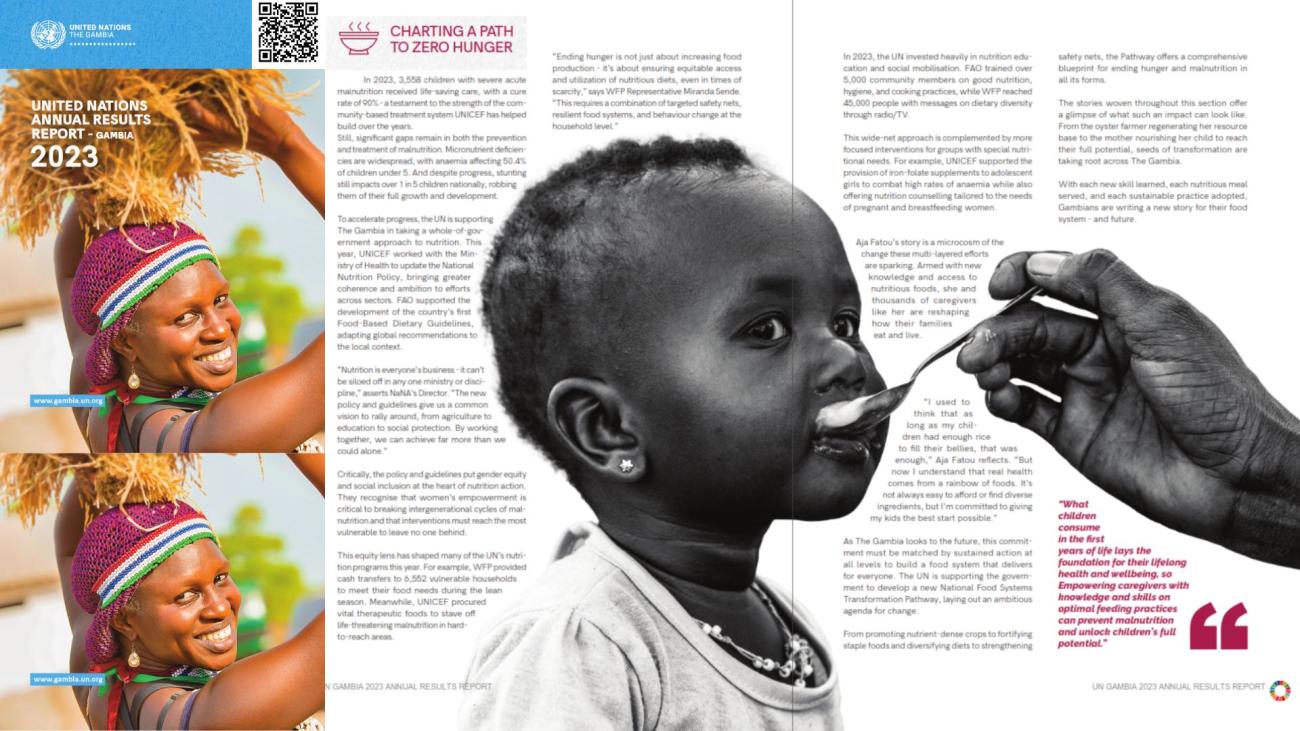In 2023, 3,558 children with severe acute malnutrition received life-saving care, with a cure rate of 90% - a testament to the strength of the community-based treatment system UNICEF has helped to build. Still, significant gaps remain in both the prevention and treatment of malnutrition. Micronutrient deficiencies are widespread, with anaemia affecting 50.4% of children under 5. And despite progress, stunting remains at 17.5 in 5 children nationally, robbing them of their full growth and development.
To accelerate progress, the UN is supporting The Gambia in taking a whole-of-government approach to nutrition. This year, UNICEF worked with the Ministry of Health to update the National Nutrition Policy, bringing greater coherence and ambition to efforts across sectors. FAO supported the development of the country’s first Food-Based Dietary Guidelines, adapting global recommendations to the local context.
“Nutrition is everyone’s business - it can’t be siloed off in any one ministry or discipline,” asserts NaNA’s Director. “The new policy and guidelines give us a common vision to rally around, from agriculture to health and protection. By working together, we can achieve far more than we could alone.”
Critically, the policy and guidelines put gender equity at the heart of nutrition action. They recognize that women’s empowerment is key to breaking intergenerational cycles of malnutrition and that interventions must reach the most vulnerable to leave no one behind.
This equity lens has shaped many of the UN’s nutrition programs. For example, WFP provided cash transfers to 6,552 vulnerable households to meet their food needs during the lean season. Additionally, UNICEF procured vital therapeutic foods to stave off life-threatening malnutrition in hard-to-reach areas.
In 2023, the UN invested heavily in nutrition education and social mobilization. FAO trained over 5,000 community members on good nutrition, hygiene, and cooking practices, while WFP reached 45,000 people with messages on dietary diversity through radio/TV.
This wide-net approach is complemented by more focused interventions for groups with special nutritional needs. For example, UNICEF supported the provision of iron-folate supplements to adolescent girls to combat high rates of anaemia while also offering nutrition counselling tailored to the needs of pregnant and breastfeeding women.
Aja Fatou’s story is a microcosm of the change these multi-layered efforts are sparking. Armed with new knowledge and access to nutritious foods, she and thousands of caregivers like her are reshaping how their families eat and live.
“I used to think that as long as my children had enough rice to fill their bellies, that was enough,” Aja Fatou reflects. “But now I understand that real health comes from a rainbow of foods. It’s not always easy to afford or find diverse ingredients, but I’m committed to giving my kids the best start possible.”
As The Gambia looks to the future, this commitment must be matched by sustained action at all levels to build a food system that delivers for everyone. The UN is supporting the government to develop a new National Food Systems Transformation Strategy, laying out an ambitious agenda for change.
From promoting nutrient-dense crops to fortifying staple foods and diversifying diets to strengthening safety nets, the Pathway offers a comprehensive blueprint for ending hunger and malnutrition in all its forms.
The stories woven throughout this section offer a glimpse of what such a system can look like. From the mother nourishing her child to reach her full potential to entire communities transforming and taking root across The Gambia.
With each new skill learned, each nutritious meal served, and each sustainable practice adopted, Gambians are writing a new story for their food system - and future.
“What children consume in the first years of life lays the foundation for their lifelong health and wellbeing, so Empowering caregivers with knowledge and skills on optimal feeding practices can prevent malnutrition and unlock children’s full potential.”




